Electric actuators are devices that produce linear motion through the conversion of electrical energy into mechanical energy. This type of linear actuator is typically attached to valves that move as a result of an outside power source. The necessary power level is achieved through the use of single-phase or three-phase AC or DC motors and various gears.
Electric actuators are divided into two different types: rotary and linear. When selecting an electric rotary actuator, important factors to consider include actuator torque and range of motion. Important factors to consider when selecting electric linear actuators include the number of turns, actuating force, and the length of the valve stem stroke. Read More…
Del-Tron Precision, Inc. was founded in order to serve the needs of automated equipment manufacturers for innovative, high quality and reasonably priced anti-friction linear bearings and associated products such as valve actuators.
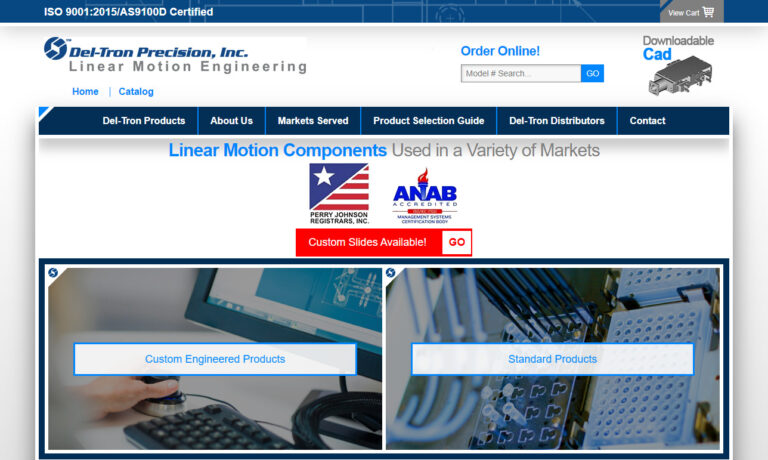
Utilized in a variety of applications and industries, the products designed and manufactured at Burr Engineering & Development include ball screw actuators and similar mechanisms.

Our linear actuators deliver exceptional quality and performance under $120 USD. Whether you're prototyping, launching a startup, or developing products for medical, automotive, robotics, or other applications, we help you save time and cost. We also offer custom actuator solutions for specific requirements. Our new L8 series brings enhanced performance to compact applications, and every actuator ...
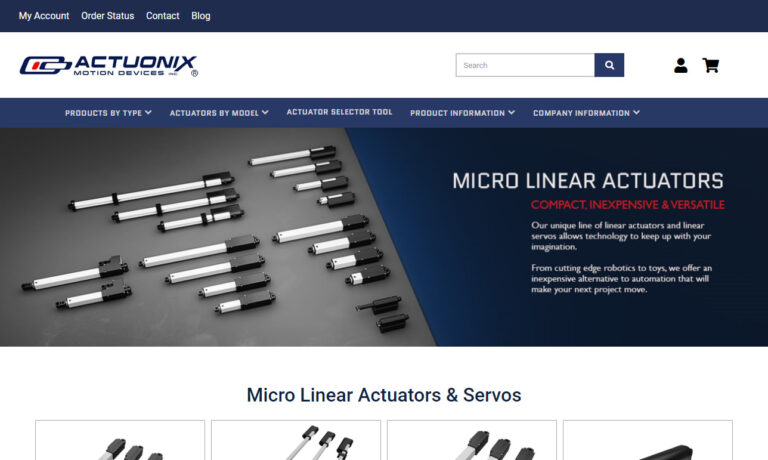
Tusk Direct’s specialty is linear motion components. We offer slides, bearings, lubricants and assemblies compatible with pneumatic or electric actuators and actuator systems.
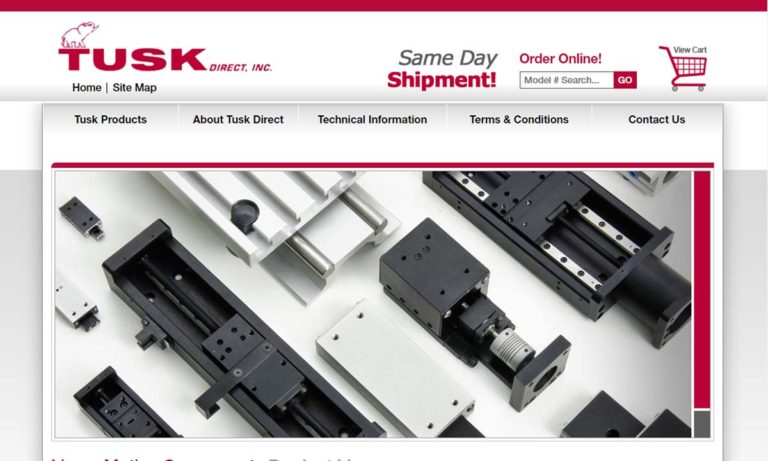
CR-TEC Engineering is a supplier of a broad range of valve products for fluid handling. Our specialty is automated valves using pneumatic or electric actuators. However, we also supply any of our valves in manually operated versions, with hand levers or hand wheel gearboxes. We are capable of assisting our customers with system design recommendations and will help in the valve selection process.
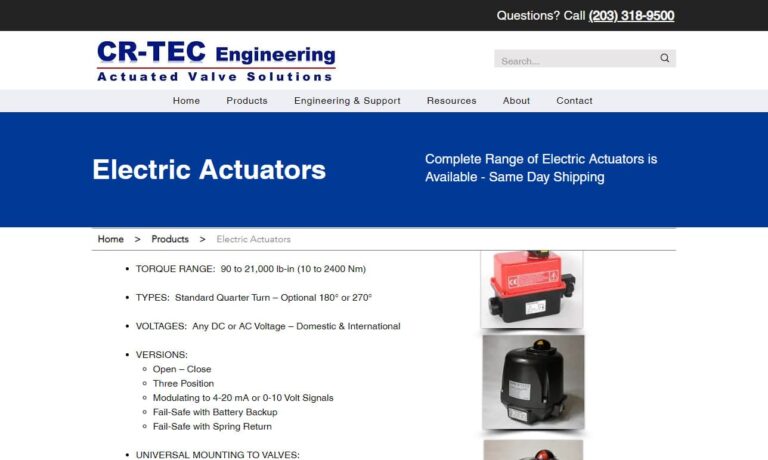
More Electric Actuator Manufacturers
Both rotary and linear electric actuators are often used in a variety of applications and industries such as: automotive, for use in power door lock systems and air conditioning systems; industrial manufacturing, to be utilized as control components in many industrial devices; agriculture, for use in farming machinery such as combine harvesters and fertilizer spreaders; and power generation, in which they are particularly utilized for green technologies such as wind turbine construction.
The basic construction of an electric actuator consists of an electric motor, a screw, a nut and possibly gears if the electric motor is a small motor. In an electric actuator, it is the nut that provides the translation from electrical motion to mechanical motion when it rotates along the screw, moving forward instead of rotating along with the screw.
Rotary electric actuators rotate from open to close using butterfly, ball, and plug valves. With the use of rotary electric actuators, the electromagnetic power from the motor causes the components to rotate, allowing for numerous stops during each stroke. Either a circular shaft or a table can be used as the rotational element. The actuator torque refers to the power that causes the rotation, while the full range of motion can be either nominal, quarter-turn, or multi-turn.
Linear electric actuators, in contrast, open and close using pinch, globe, diaphragm, gate, or angle valves. Linear electric actuators are often used when tight tolerances are required. These electric actuators use an ACME screw assembly or motor-driven ball screw to supply linear motion. Within linear electric actuators, the load is connected to the end of a screw that is belt or gear driven.





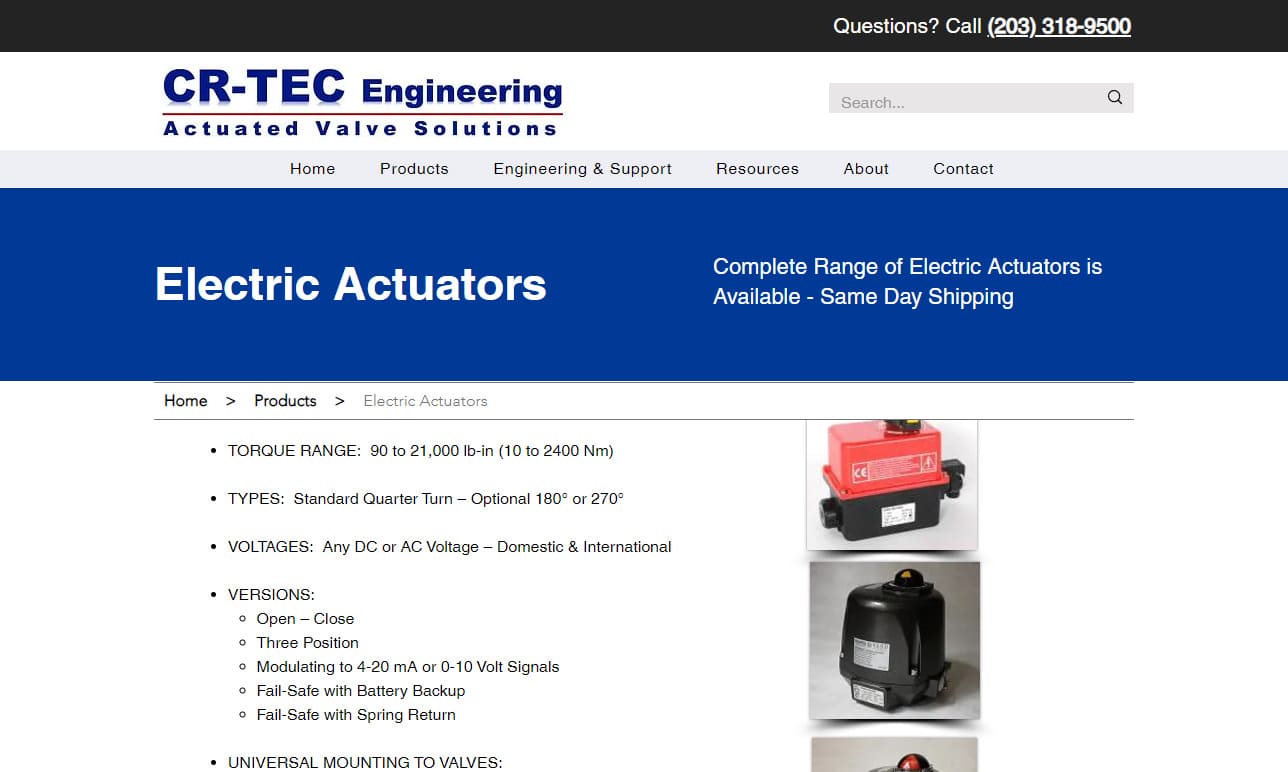
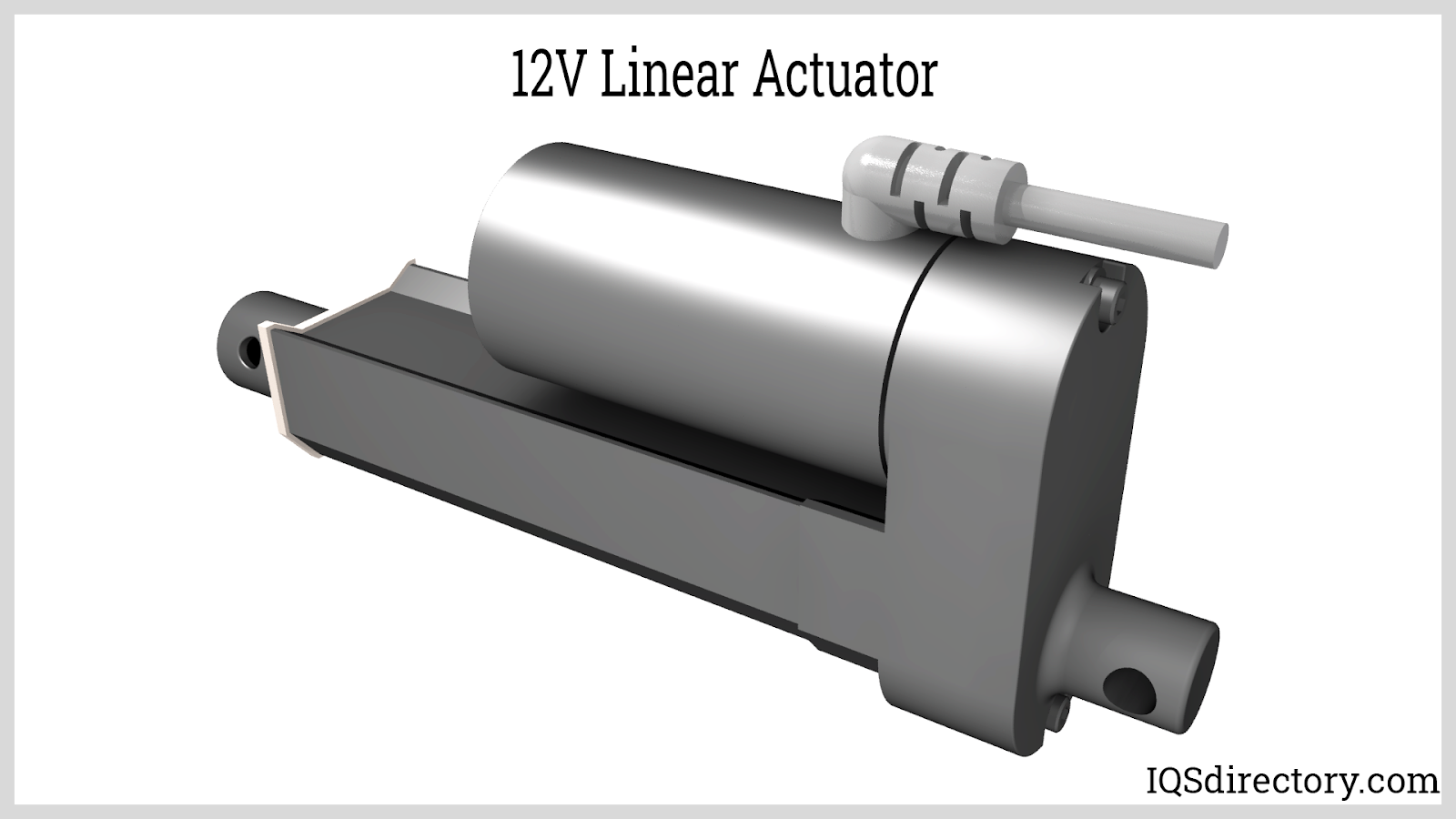
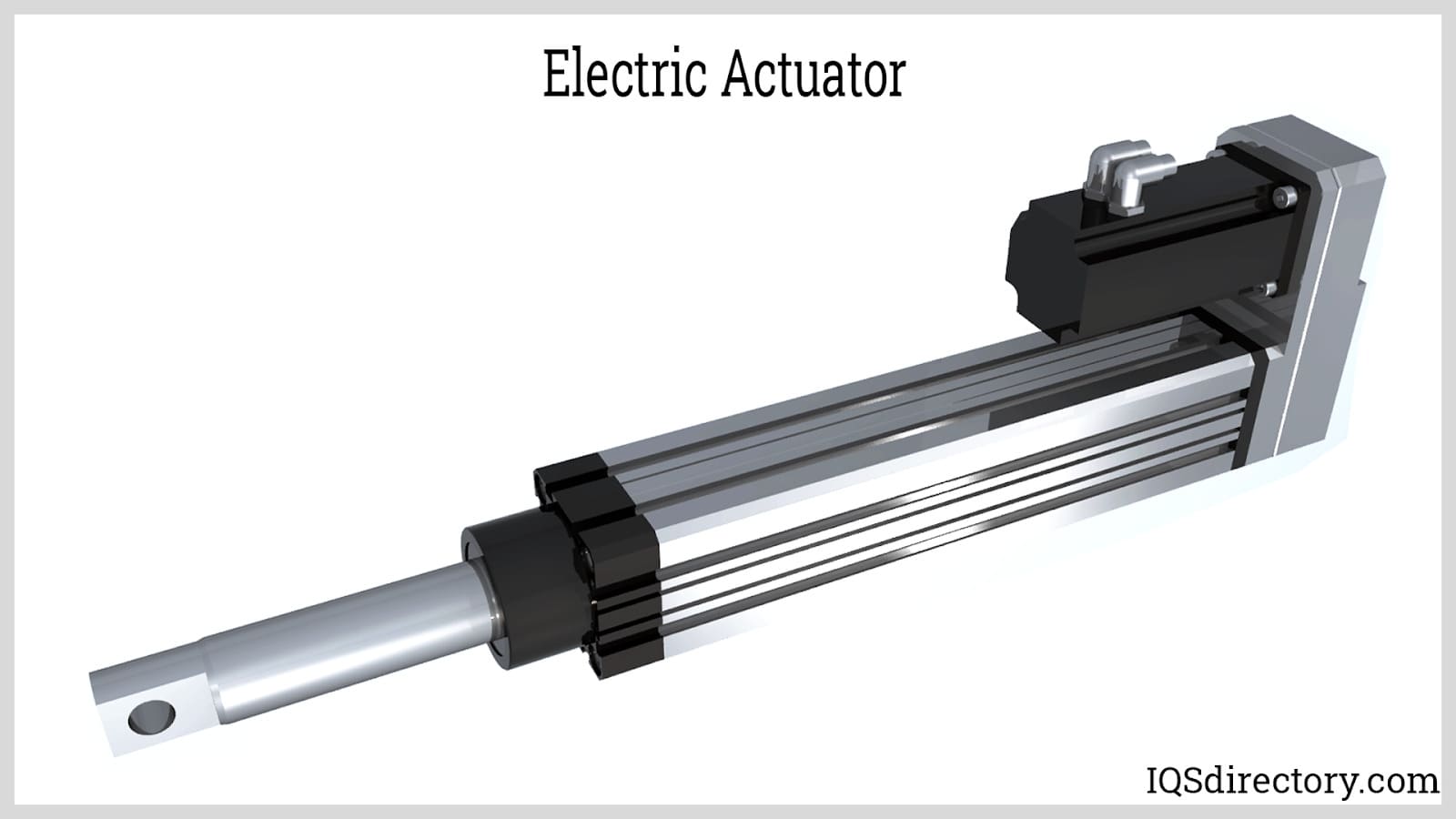
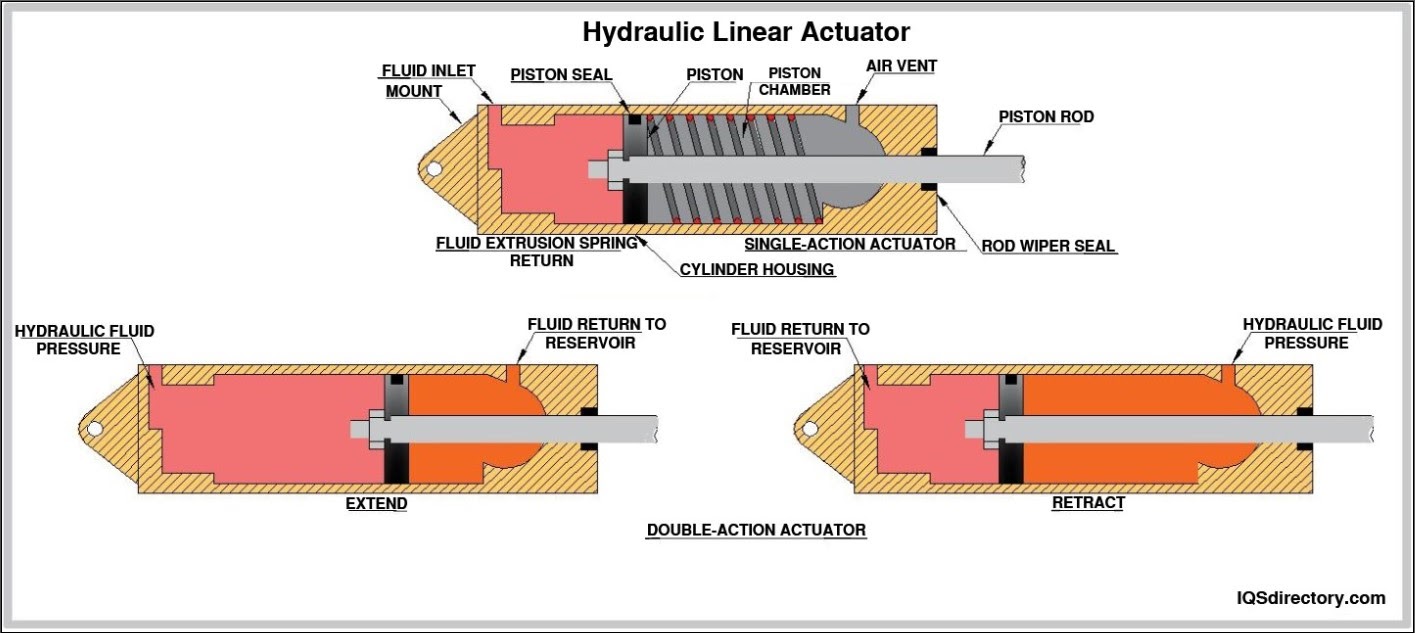
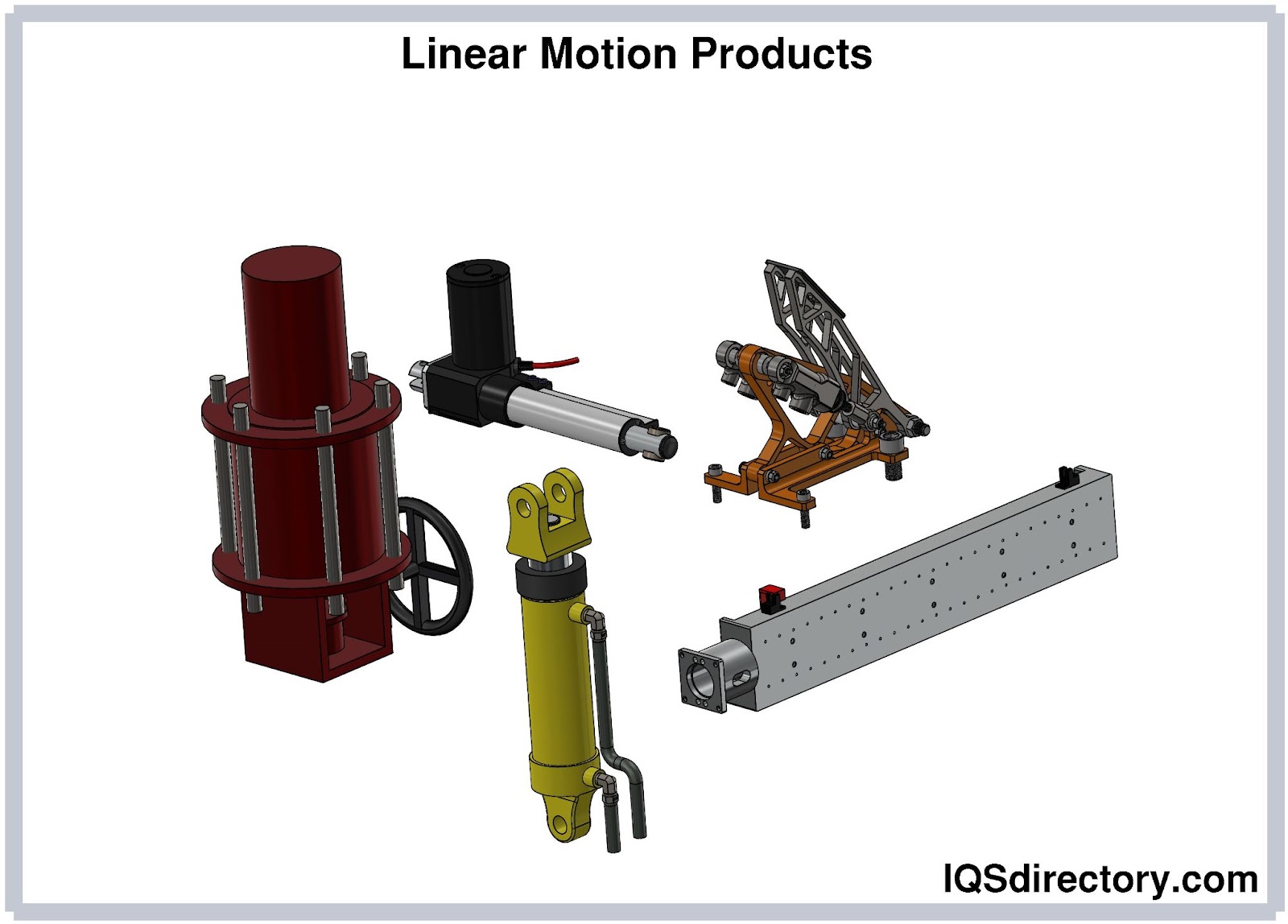
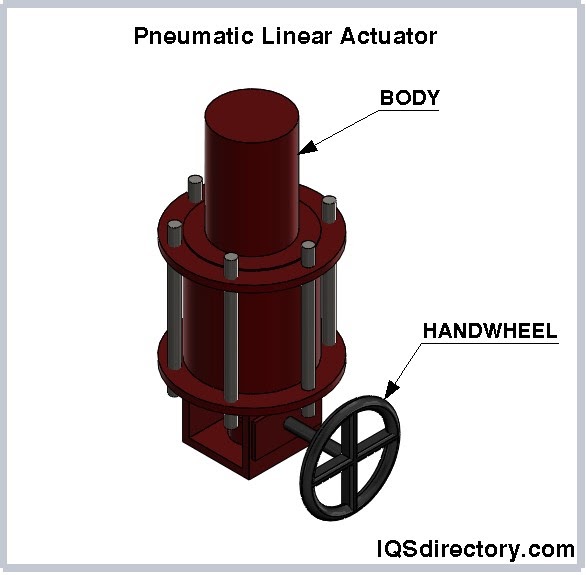
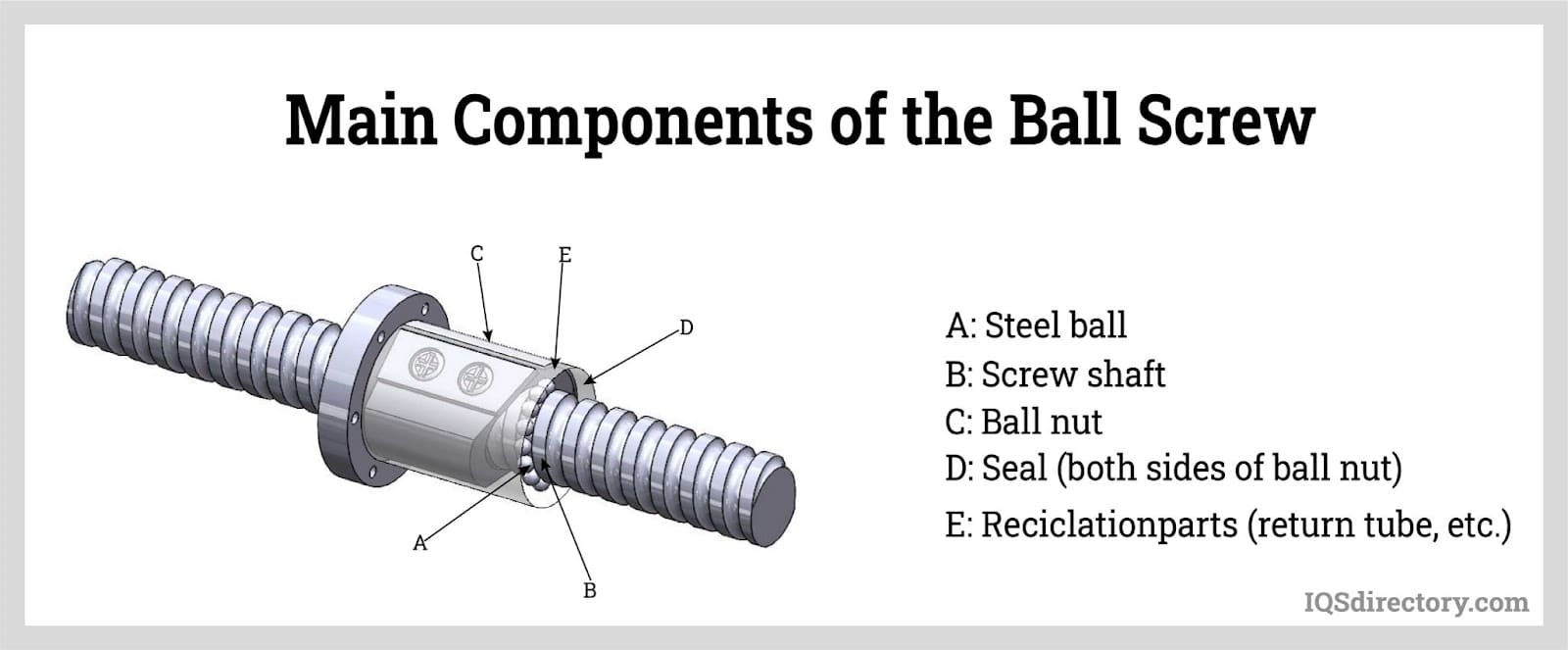
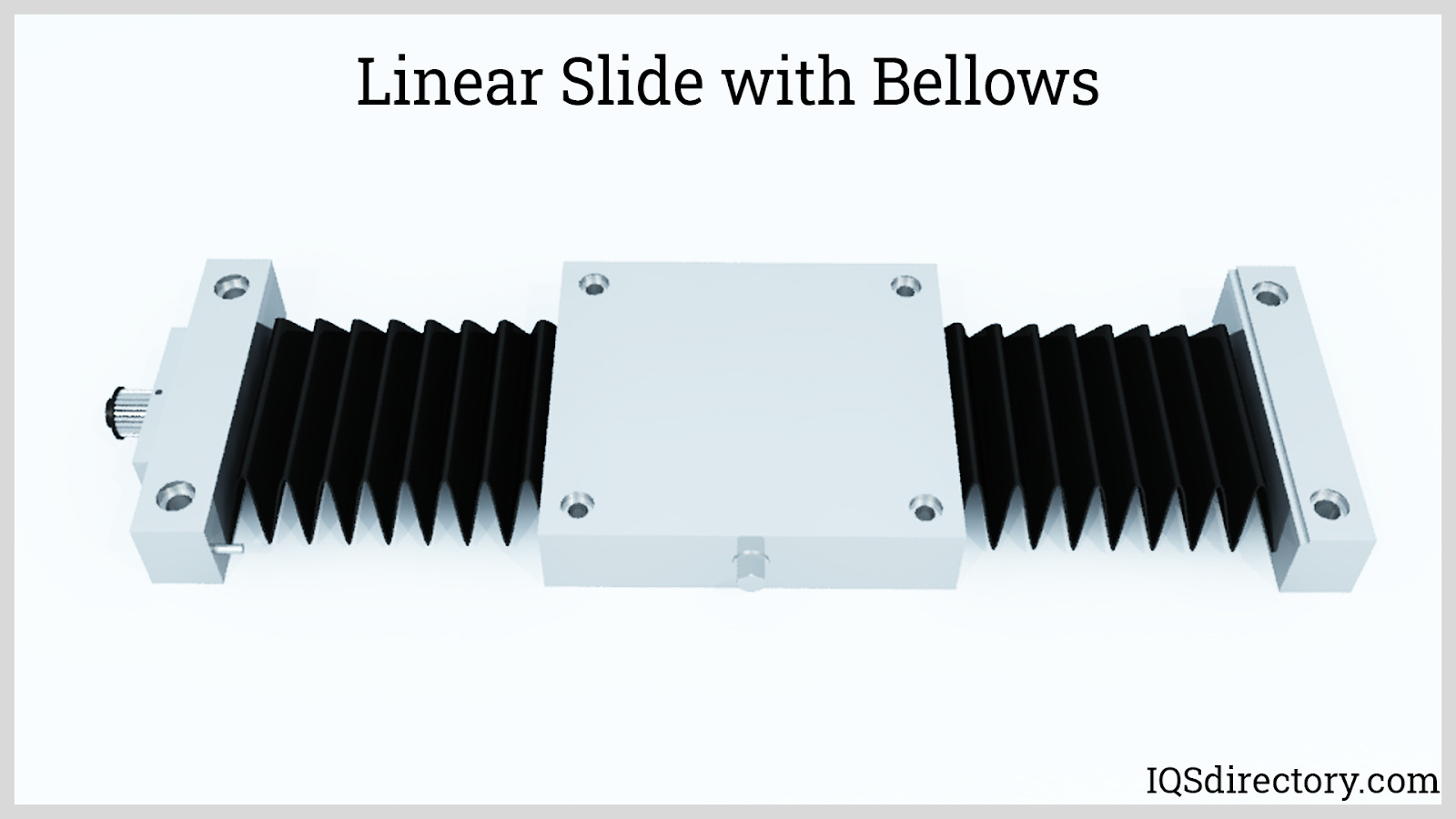
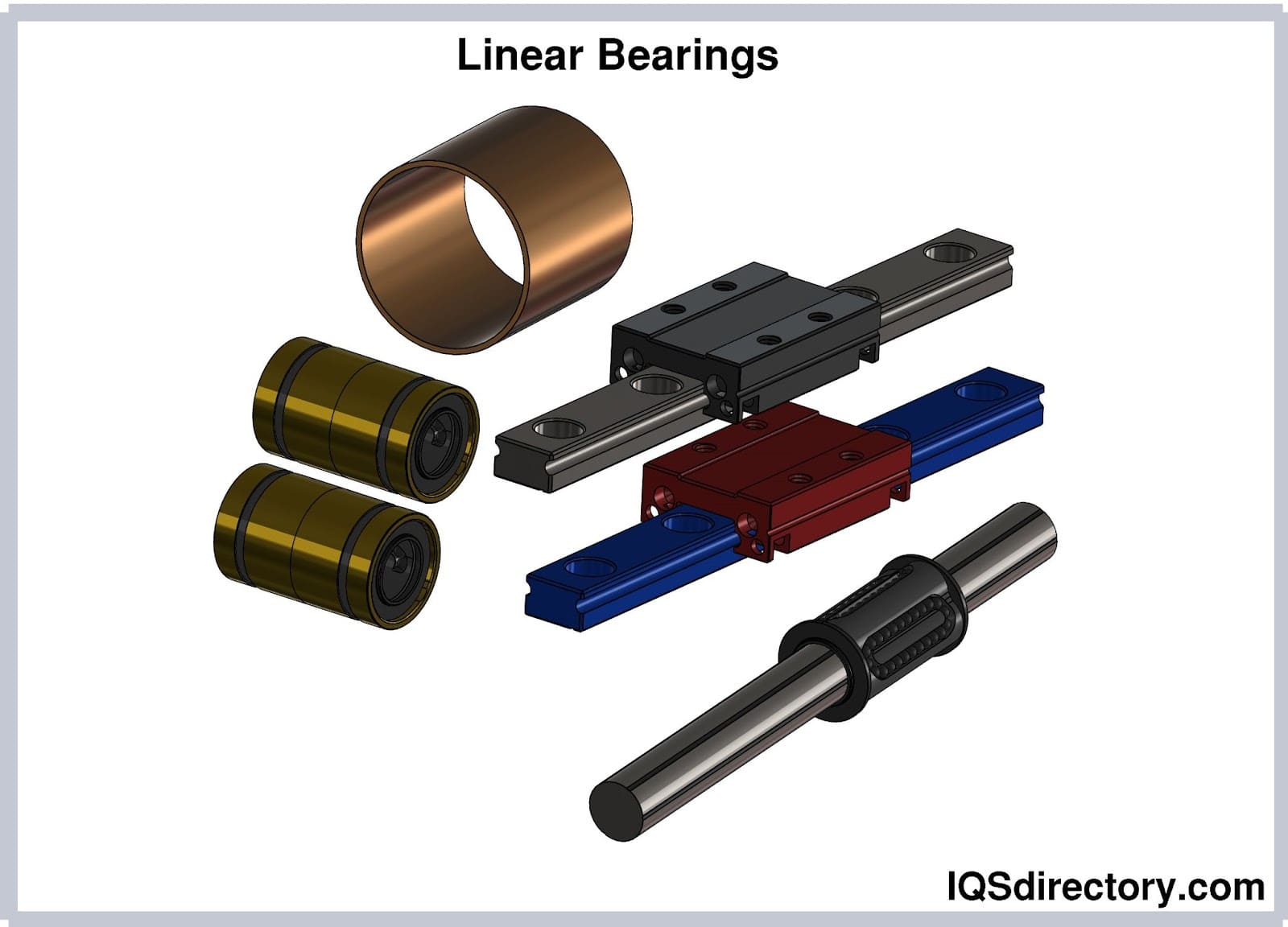
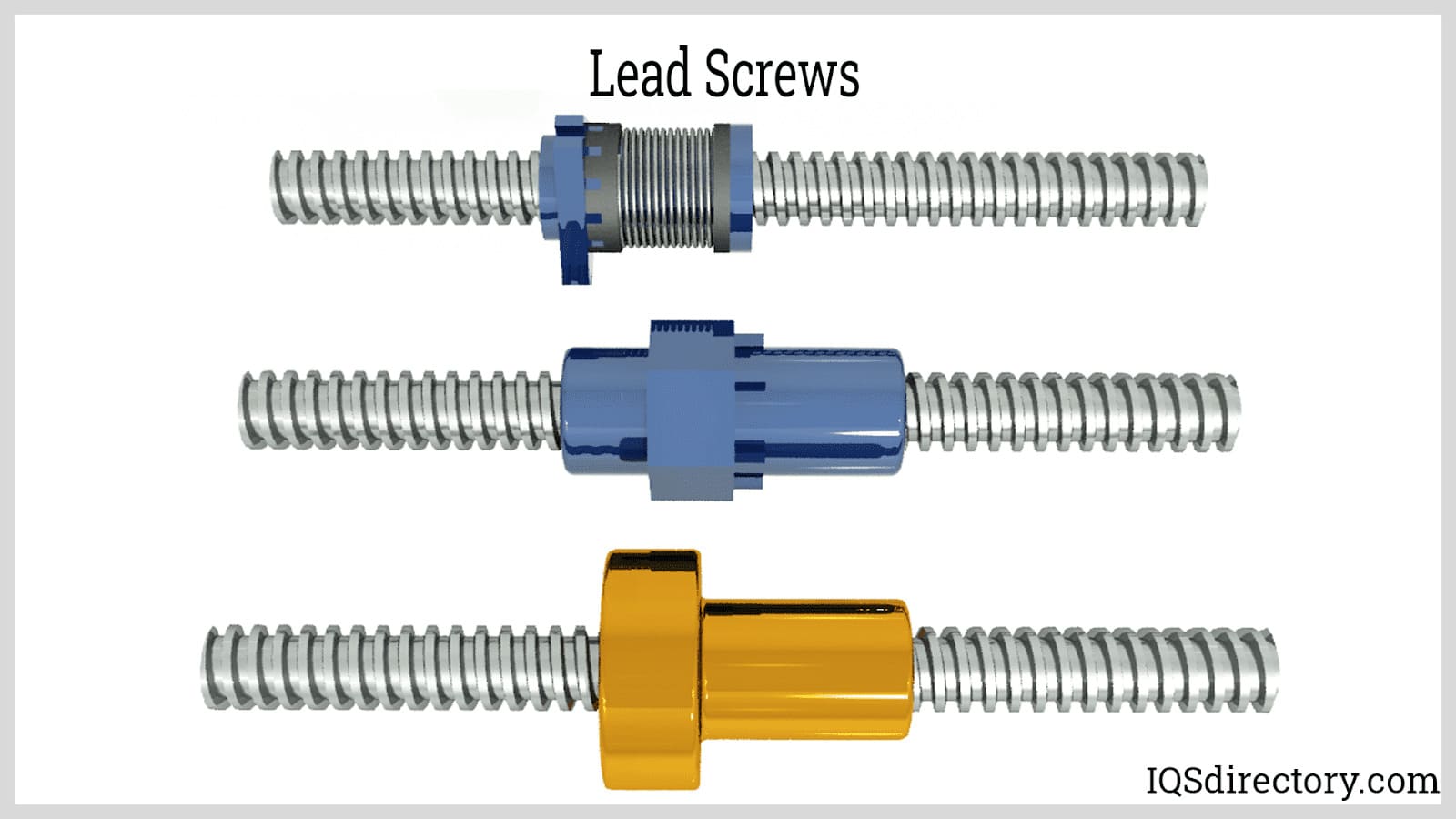
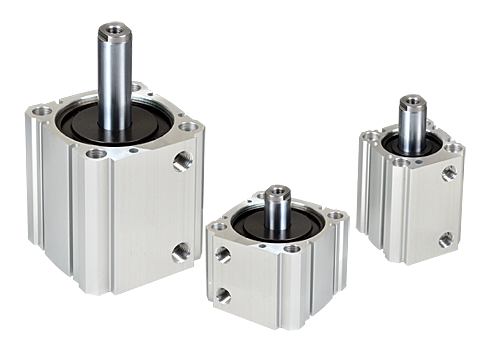 Air Cylinders
Air Cylinders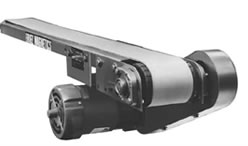 Assembly Machinery
Assembly Machinery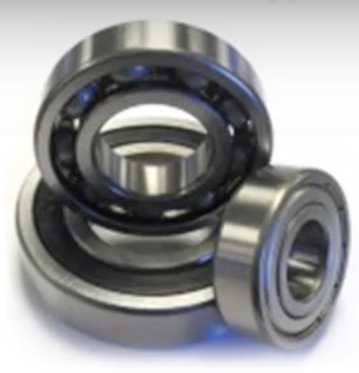 Ball Bearings
Ball Bearings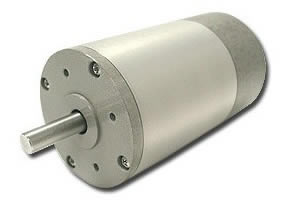 Electric Motors
Electric Motors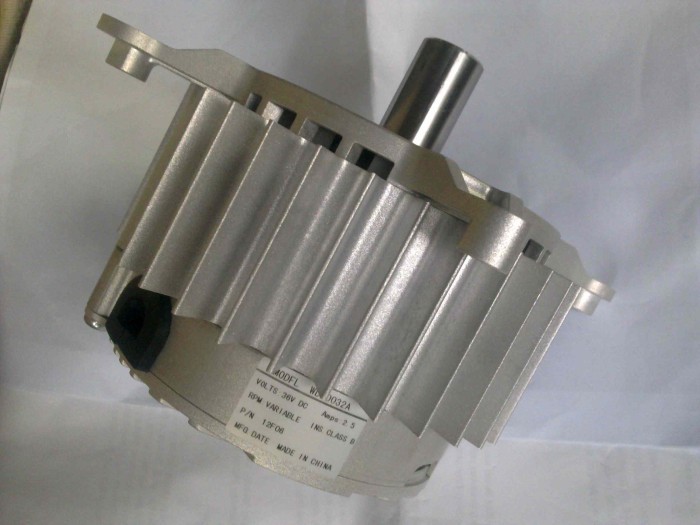 Fractional Horsepower Motors
Fractional Horsepower Motors Friction Materials
Friction Materials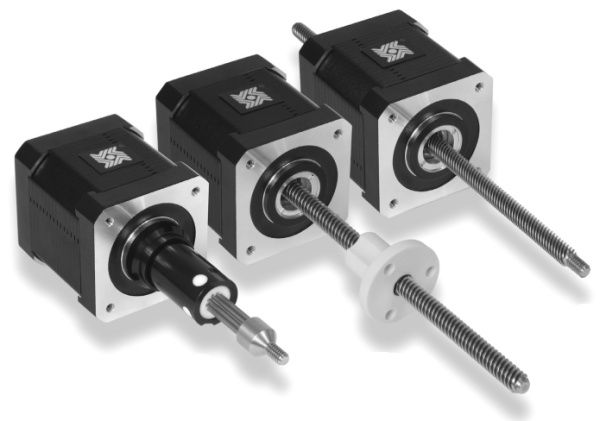 Linear Actuators
Linear Actuators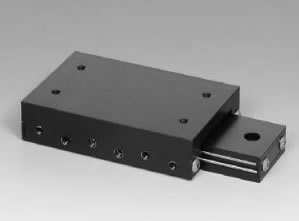 Linear Bearings
Linear Bearings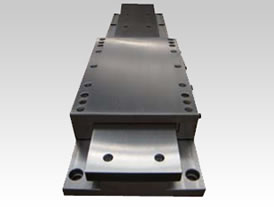 Linear Slides
Linear Slides Castings & Forgings
Castings & Forgings Bulk Material Handling
Bulk Material Handling Electrical & Electronic Components
Electrical & Electronic Components Flow Instrumentation
Flow Instrumentation Hardware
Hardware Material Handling Equipment
Material Handling Equipment Metal Cutting Services
Metal Cutting Services Metal Forming Services
Metal Forming Services Metal Suppliers
Metal Suppliers Motion Control Products
Motion Control Products Plant & Facility Equipment
Plant & Facility Equipment Plant & Facility Supplies
Plant & Facility Supplies Plastic Molding Processes
Plastic Molding Processes Pumps & Valves
Pumps & Valves Recycling Equipment
Recycling Equipment Rubber Products & Services
Rubber Products & Services